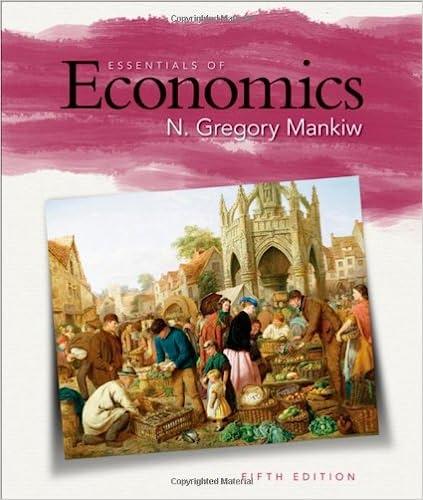Question 3
Repeat Question 1 for the case in which the utility function is
Cobb-Douglas Special Case: U(x ,x ) = x2^1/2 x2^1/2
Tutorial Questions Question 4 Question 1 Repeat Question 1 for the case in which the utility function is Suppose that a consumer has preferences defined over the consumption set Quasi-Linear Special Case 1: U(X1, X2) = $1 + In (x2) . R4 = {(21, 12) : 21 E [0, 00) , 22 E [0, oo) }. In other words, this consumer has preferences defined over the set of all bundles (combinations) of non-negative quantities of each of two commodities. Suppose that these preferences can Question 5 be represented by a utility function of the form U : R4 - R. Consider the Repeat Question 1 for the case in which the utility function is following example of such a utility function. Quasi-Linear Special Case 2: U(21, X2) = 21 + VX2. Perfect Substitutes: U(X1, (2) = 21 + 22. Question 6 Repeat Question 1 for the case in which the utility function is Complete the following exercises for each of these utility functions. 1. Find the equation of a representative indifference curve. (The equation Scarf-Shapley-Shubik Special Case: should express x2 as a function of x1 and the fixed utility level U). U(x1, T2) = max (min (1, 2x2) , min (271, 22)) . 2. Draw the representative indifference curve. Question 7 3. Are the preferences rational (that is, are they both strongly complete and transitive)? Justify your answer. (A graphical argument will suf- Repeat Question 1 for the case in which the utility function is fice. 4. Are the preferences locally non-satiated? What about monotone? What Bliss Point Special Case: U(21, 22) = -V (21 - 5)2 + (262 - 5)2. about strongly monotone? Justify your answers. (A graphical argu- ment will suffice.) Additional Problem Questions 5. Are the preferences convex? What about strictly convex? Justify your answer. (A graphical argument will suffice.) Question 8 Lexicographic Preferences: Suppose that a consumer has lexicographic Question 2 preferences over bundles of non-negative amounts of each of two commodities. The consumer's consumption set is R4. The consumer weakly prefers bundle Repeat Question 1 for the case in which the utility function is a = (a1, a2) over bundle b = (b1, b2) if either (i) a1 > bi, or (ii) both a1 = b1 Leontief (Perfect Complements): U(x1, X2) = min (21, 22) . and a2 > b2. In any other circumstance, the consumer does not weakly prefer bundle a to bundle b. (Note that these preferences are not continuous. Furthermore, they cannot be represented by a utility function.) Question 3 1. Under what circumstances will bundle c be strictly preferred to bundle Repeat Question 1 for the case in which the utility function is d? Cobb-Douglas Special Case: U(21, 12) = 21x2. 2. Under what circumstances will bundle c be indifferent to bundle d







